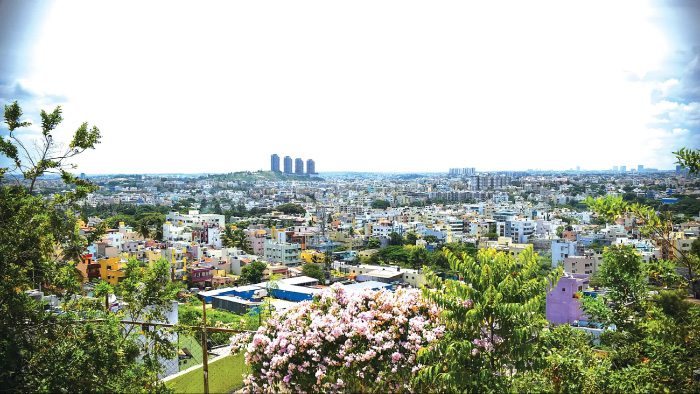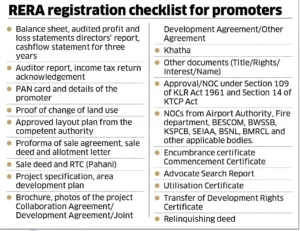
Decoding BDA's list of illegal layouts
Mahesh (name changed) bought a property near Avalahalli village near Yelahanka in 2023, in a private layout approved by the local Panchayat. He was in for a shock when he saw the survey numbers of his layout in the Bangalore Developement Authority’s (BDA) recent notification with a list of 279 illegal layouts in its jurisdiction.
Mahesh is just one gullible buyer who got lost in the complex web of land transaction process in Bengaluru. As someone who migrated to the city recently, he says the lawyers he went ot checked the legality of previous transactions. He claims he was unware of the need for a conversion certificate before buying the land.
Popularly known as DC conversion (the permission of the District Commissioner to use the land for something other than agriculture), the Conversion Certificate is an important requirement in all land transactions and a basic requirement for all layouts.
‘Panchayats can’t issue plan’
Another requirement is for the layout plan to be approved BDA or other competent planning area authorities around Bengaluru. Due to a lack of clarity on who can issue plan santions for layouts, land owners who want to form layouts take it from Panchayats, say sources.
“When a layout is planned, a developer must obtain a plan sanction from the BDA under section 32 of the BDA act. They often take plans from the local Panchayats, which have no authority,” says Bipin Hegde, a Bengaluru-based advocate.
He is clear that no village panchayat inside BDA or planning areas falling under Bangalore Metropolitan Region Development Authority or has the legal right to sanction a plan for a layout.
However, buyers are puzzled. “Panchayat is an elected body and collects taxes. It even gives plan approvals for houses and layouts. When approval from a Panchayat has no value, the existence of such a body itself is a waste,” says Mahesh.
Tip of the iceberg
Property prices in North Bengaluru are soaring, ensuring good invesment returns. As a result, many layouts are mushrooming in North Bengaluru.
“There are quite a few illegal layouts here. Now that Shivaram Karanath Layout will expand and drone surveys will take place, buyers fear losing the land. Many are putting up small shed on the sites to ensure it looks occupied,” says Vikram Shetty, a Yelahanka resident.
Sources say BDA’s lis is just the tip of an iceberg, and thousands of illegal layouts are yet to come under the radar, especially in the North Bengaluru and Hesaraghatta areas. The site owners will not be compensated properly if these illegal layouts are acquired for future project.
“Many private developers go for such illegal ventures, banking on the hope that BDA will regularise the illegality in future, in the form of Akrama Sakrama. They get electricity and water connections as well.” says an activist.
The confusion includes private layouts with BDA approval or no-objection certificate (NOC). A BDA NOC means that the land has not been notified or is being acquired for any other purpose at that point in time. But there is no guarantee that it will not acquired in furture.
Buyers think the buildings in layout cannot be illegal when there is a BDA NOC and DC conversion. Here, the BDA approval comes into the picture. The BDA seal on the layout plan ensures that the layout is legal and as per norms. Without this, the layout remains illegal.
The Pahani dilemma
Once converted, the records go to the planning authority. Since the land is not converted, it will only be a part of revenue records. The Pahani will remain in the name of the original owner, not the site owner. The minimum requirement for a Pahani is five guntas (5445 sqft), which an individual site owner will not own.
To quote from a conversion certificate, “the entire area of land conversion in Pahani, maintained in the Land Software of the Revenue Department, can be sold as a single unit without division, only till the Town Planning Authority/Grama Panchayat/Development Authority/Competent Authority approved the layout plan.”
This means that sites in a layout without plan approval by the Town Planning Authority or the Panchayat or other competent authority will carry the name of the old owner in the Pahani certificate.
“If BDA acquires such lands for its mega layout projects such as Shivaram Karanth Layout, the site owners will not get compensation. The land owners in whose name Pahani exists are eligible for it,” says an activist aware of issues in Shivarama Karanth Layout.
BDA and the government stand to benefit doubly from thiis. “The site owners living in illegal layouts added to such acquired lands will have to pay for DC conversion of the land as well as wxtra monehy to BDA for proper ownwership. However the land’s pahani will be in the previous owner’s name, who becomes eligible for compensation,” says the activist.
However, the BDA will not compensate such people either, rightly so. He adds that BDA will profit more as it does not have to give as many compensatory sites as it will to agricultural land owners in such cases.
Identifying the illegality
BDA’s 279-layout list specifies the village, hobli, and survey number of the layout, but it does not specify the geographical location, address, or name of the promoter and the layout.
“Without specifying the layout’s name, how would the prospective purchasers know whether what they intend to buy is illegal?” asks Mithun Gerahalli, a Bengaluru-based lawyer.
“Survey numbers do help, but the list must mention the extent of land used. Sometimes, layouts are formed in part of survey numbers and not in full,” he adds.
“In 2021, BDA released a list of illegal layouts where the name of the layouts and location were mentioned. This was more useful. To know the exact names of layouts, people must apply under Right to Infromation,” says Mithun.
“Many buyers buy lands with full knowledge. Some go to professional agencies, which sometimes miss out on conversion or possible goverrnment plans. The sale deed mentions the conversion number and changes in land use,” says Vikram.
Stopping the illegality
Bipin Hegde says private builders do not want to seek BDA approval because the BDA mandates 45% of open spacce. which they want to utilise to make more sites and more money.
Bigger developers usually get the required approvals and conversions done, but smaller ones usually find a shortcut, say sources.
“Under the BDA Act and Land Revenue Act, there are provisions to take action against developers who form illegal layouts. When the work starts, BDA officials or local tahsildars can eaasily identify it and start taking action to stop it. But these provisions are rarely used,” he says.
“Identification of illegal layouts has been done on many occasions, but no action will be taken against the developers or offiicer/politicians who work hand in golve,” says Bipin Hegde.
“Officials have to roam around and check whether work is happening or not according to norms. A commencement certificate is given when work starts,” he says.
“A bank loan is no guarantee of legality of the property. Banks offer loans based on collaterals and salaries etc, and cannot be seen as the proof of legality of the property,” he adds.
‘check RERA approvals’
“Ultimately, it’s your mistake if you are aware of the illegality and still bought it. But if you can prove that you were misled by saying it was an approved layout, you can approach the consumenr court or the specific authority to get a legal solutions,” Bipin Hegde says.
“After July 2017, all projects had to be approved by Real Estate Regulatory Authority (RERA). If there is no conversion of land, there is no plans. If there is no plan, there is no RERA registration,” he explains. He adds that RERA approval is a relaible indicator that the project is fully legal and has all required approvals.
“There are issues on both sides: enforceability and information. It is your fault if you are not looking at RERA approval even today. If layouts are still being formed without RERA approval, it would be a fault on the government and concerned bodies,” says Mithun.
“Property buyers should see if the BDA or other planning authority has approved the palns,” ads Bipin Hegde.
What is the legal recourse? The buyers still have the title to the property, but no plan has been sactioned. If a regularisation scheme comes into effect, experts say, even the current illegal layouts will be regularised, thereby providing relief to investors.


